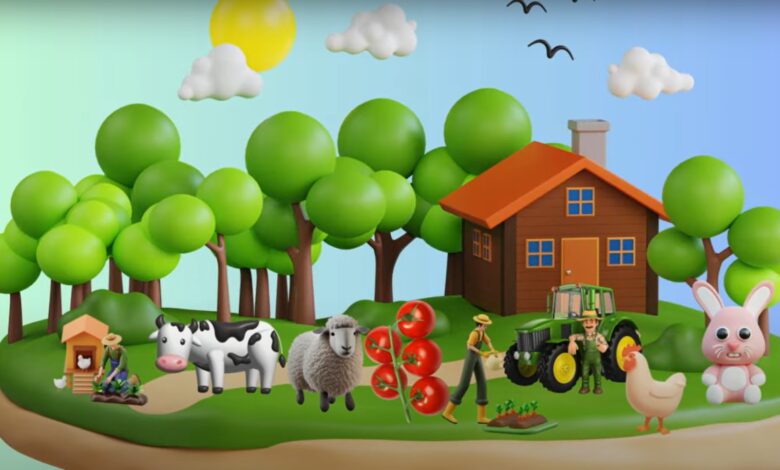How to Create Engaging 3D Kids’ Videos Using Canva

If you’re looking to grow a kids’ content channel on platforms like YouTube, integrating 3D elements into your videos can significantly enhance viewer engagement. This guide outlines a step-by-step process for creating an engaging 3D video using Canva, inspired by a successful example featuring the classic nursery rhyme, “Old MacDonald Had a Farm.”
Why 3D Content Matters
For a new channel, early success can be measured by audience response. A video created just two days ago garnered 233 views, highlighting the appeal of 3D content. Compared to other videos on the same channel, which is only a month old, this steady growth underscores the potential of 3D animations to capture interest. If you’re building a kids’ content channel—especially one featuring songs—incorporating 3D visuals is a winning strategy.
Step 1: Create Music

Start by generating music for your video. Tools like suno.ai are excellent for creating various types of music, including kids’ songs. For this example, the song “Old MacDonald Had a Farm” was used. Suno.ai not only provides the music but also generates lyrics, which guide the visual elements of your video.
Organizing Lyrics
The lyrics of “Old MacDonald Had a Farm” determine the sequence of visuals. For instance:
- Verse 1: “Old MacDonald had a farm, E-I-E-I-O”
- Characters and elements: Farm, cow, sheep, tomatoes, carrots, etc.
Ensure your video scenes align with the lyrics to maintain narrative coherence.
Step 2: Set Up Your Canvas
- Open Canva and create a new project using the YouTube video dimensions (1920×1080).
- Search for 3D elements in Canva’s graphics library. For this example, a “Country House 3D icon” was used as the base for the farm.
- Design your first slide:
- Add a gradient background (e.g., a bluish gradient for a calm, inviting atmosphere).
- Position and resize the farm element to fill the slide, ensuring there’s enough space for all characters.
Step 3: Add Characters and Animate
- Include Characters:
- Animate Characters:
- Use the “Pulse” animation for emphasis. For instance, make the farmer pulse when the lyrics mention him.
- Adjust the character’s size and position for better visibility and dynamic movement.
- Match and Move Transitions:
- Duplicate slides and apply the “Match and Move” transition. This creates a seamless zoom-in or zoom-out effect, enhancing visual flow.
Step 4: Sync Audio and Text
- Add Music:
- Import the music created with suno.ai into Canva’s audio library.
- Sync the audio with the slides to ensure timing matches the lyrics.
- Text Effects:
- Use text to highlight sound effects (e.g., “moo moo” for the cow). Canva’s text effects, like “Sticker” or “Typewriter,” can make these elements more engaging.
- Match the text’s color and style to the characters (e.g., black and white for the cow).
- Timing Adjustments:
- Adjust the timing of animations and transitions to align with the song’s rhythm. For instance, ensure the “moo moo” text appears exactly when it’s sung.
Step 5: Refine and Complete
- Repeat for Each Character:
- Continue the process for all animals and elements mentioned in the song.
- Each slide should spotlight the relevant character or object while maintaining consistency in style.
- Finalize with E-I-E-I-O:
- Create a slide featuring the “E-I-E-I-O” phrase. Use bold, playful fonts like “Kawaii” and animate it with effects like “Typewriter” to captivate the audience.
- Polish Transitions:
- Review all transitions and animations to ensure a smooth and professional flow.

Conclusion
Creating a 3D animated video for kids requires attention to detail, creativity, and patience. While it’s a labor-intensive process, the results are highly rewarding. By following these steps and leveraging tools like Canva and suno.ai, you can craft visually stunning and engaging videos that resonate with young audiences and help grow your channel.







